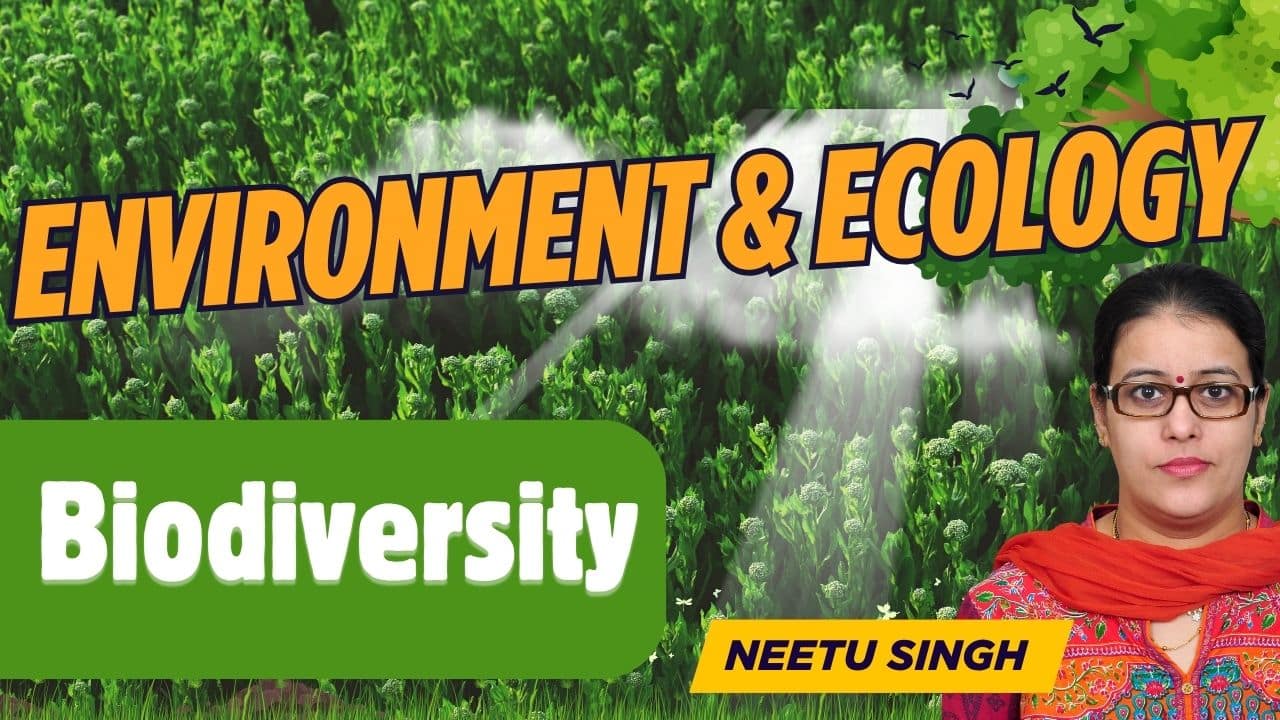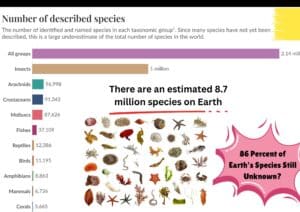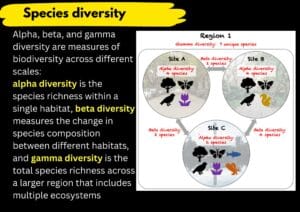
Biodiversity is the variety of life on Earth, encompassing the diversity of species, genetic variations within those species, and the ecosystems they form. It is a term that includes all living organisms, from plants and animals to microorganisms, and the complex interactions between them and their habitats.
Species diversity: The variety of different species in a given area, from the number of species to their relative abundance.
Genetic diversity: The variation of genes within a single species, which is crucial for adaptation and survival.
Ecosystem diversity: The variety of different ecosystems in a geographical area, such as forests, wetlands, and deserts.
There are an estimated 8.7 million species on Earth, though only about 1.2 million have been scientifically described and cataloged. Insects are the most numerous described group, followed by birds, reptiles, and mammals

There are three high-level habitat environments: land, marine, and deep subsurface environments. Deep subsurface environments can be terrestrial or below the ocean floor, but represent habitats deep below the surface – extending from around 50 metres to thousands of metres below the surface
Most of life exists on land 86% of biomass.
But they do dominate the animal kingdom: 78% of animal biomass lives in the marine environment.